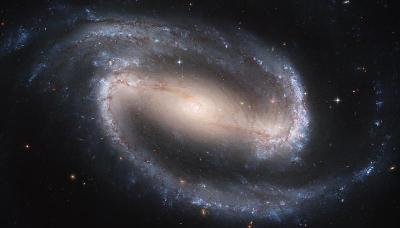Astrophysik: Gravitationsdetektoren
LISA's goals

Far from terrestrial noise sources, and as an interferometer with extremely long arms, LISA is tailor-made to study low frequency gravitational waves, which oscillate no more than once in ten seconds. As such, LISA is ideal to study supermassive black holes, which can be found in the core regions of most galaxies (such as the galaxy NGC1300 shown here): Both the signals of smaller black holes spiraling into a supermassive hole and the gravitational waves produced in the merger of supermassive holes should be accessible to LISA. Also, LISA is set to study gravitational waves produced in the very early universe, less than a trillionth of a second after the big bang. Finally, there is a less exotic class of targets: the gravitational waves produced by ordinary double stars.
[ Sitemap ]
[ info ] This website was created by the MPI for the History of Science.
 Scene
Scene


 1st Slide
1st Slide
 Branching Point
Branching Point
 Module: Astrophysik: Gravitationsdetektoren
Module: Astrophysik: Gravitationsdetektoren Sequence: Gravitationswellendetektoren Einstieg
Sequence: Gravitationswellendetektoren Einstieg Branching Point: Gravitational wave detectors
Branching Point: Gravitational wave detectors Slide: Detecting gravitational waves
Slide: Detecting gravitational waves Back
Back

